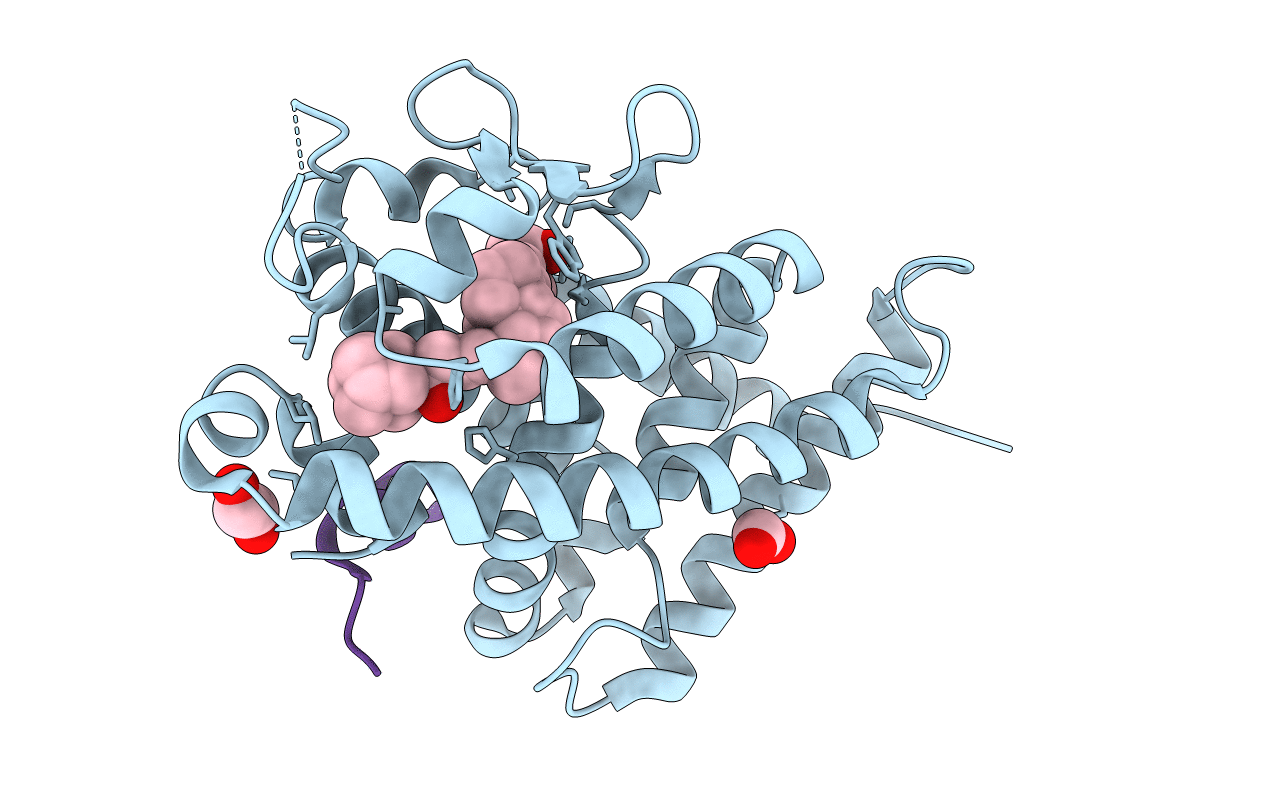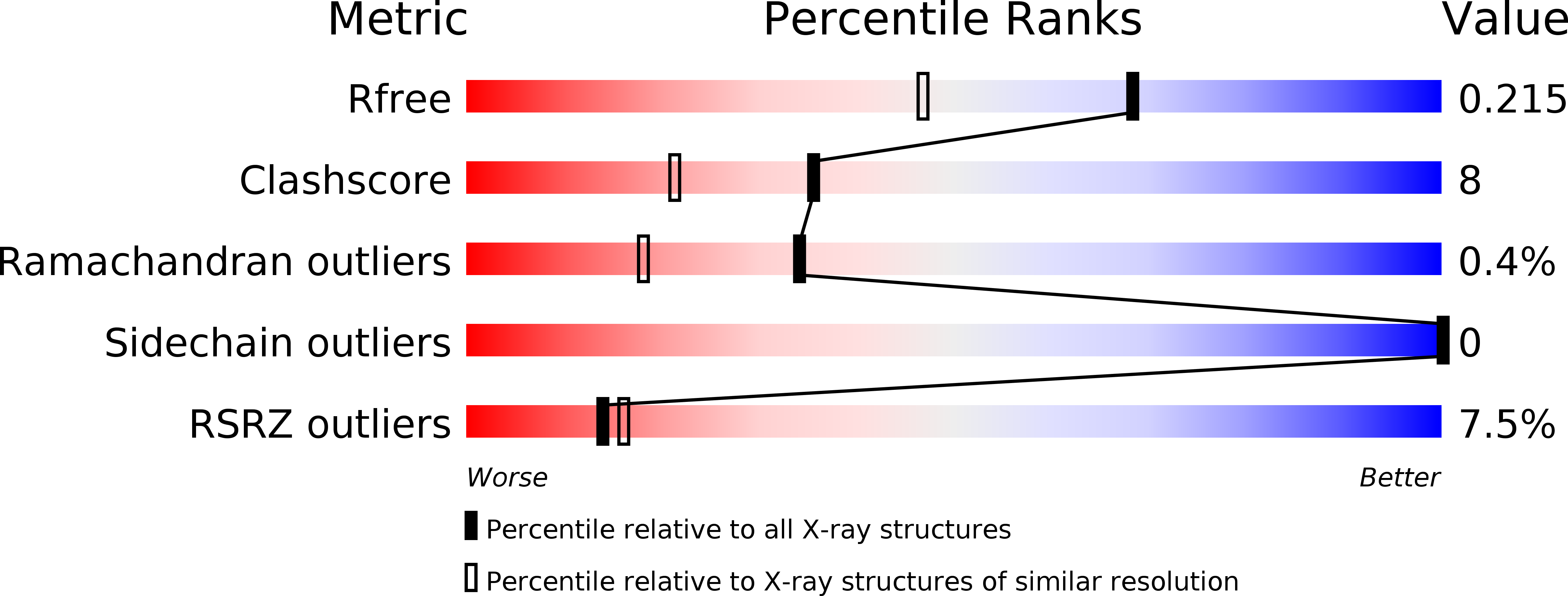
Deposition Date
2008-04-19
Release Date
2008-09-02
Last Version Date
2024-03-13
Entry Detail
PDB ID:
2ZMI
Keywords:
Title:
Crystal Structure of Rat Vitamin D Receptor Bound to Adamantyl Vitamin D Analogs: Structural Basis for Vitamin D Receptor Antagonism and/or Partial Agonism
Biological Source:
Source Organism:
Rattus norvegicus (Taxon ID: 10116)
Host Organism:
Method Details:
Experimental Method:
Resolution:
1.70 Å
R-Value Free:
0.22
R-Value Work:
0.21
R-Value Observed:
0.21
Space Group:
C 1 2 1


